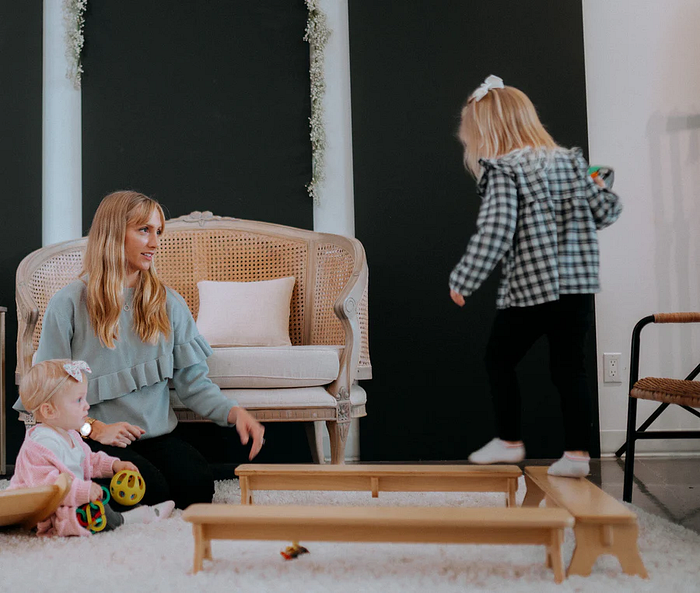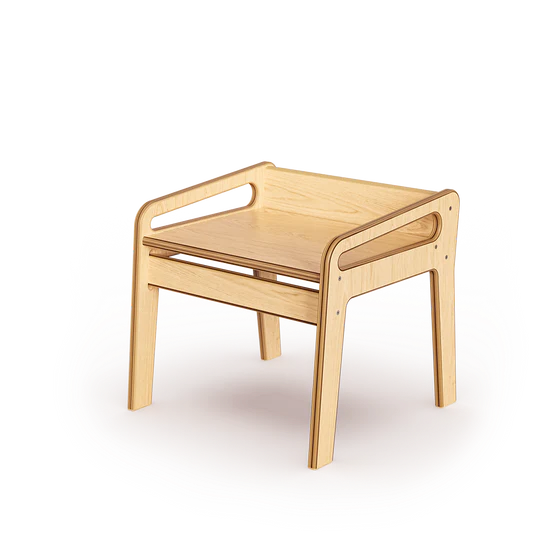Designing with Montessori Furniture for Children
Introduction
Have you ever noticed how some rooms feel naturally welcoming for children — calm, organized, and just their size? That’s no accident. The layout and furniture in a child’s space play a big role in shaping their behavior and mindset. Kids shelves, wooden classroom furniture, childrens wooden furniture, and Montessori furniture are more than just design choices — they support independence, learning, and creativity in children.
This blog is your ultimate guide to designing functional, beautiful, and kid-friendly learning environments using thoughtful furniture choices. Let’s explore how to build spaces that empower young learners to grow with confidence.

The Heart of Montessori: Why Furniture Matters
The Montessori philosophy places great emphasis on a child’s environment. The furniture in that space is not just functional — it’s a key learning tool. When children have access to materials that are within their reach, properly sized, and thoughtfully placed, they gain a sense of control. That control fuels confidence and encourages them to take ownership of their learning journey.
What Are Kids Shelves and Why Are They Game-Changers?
Unlike traditional storage units that tower above children’s heads, kids shelves are intentionally low, open, and accessible. These shelves display toys, books, and activities in an inviting way that allows children to choose what they want to explore. This builds autonomy and teaches them decision-making, responsibility, and organization — without needing constant adult intervention.
Choosing the Right Kids Shelves for Your Space
When selecting kids shelves, it’s essential to keep your child’s perspective in mind. Look for furniture that matches their height so they can independently access their items. Open shelving helps them see all available options clearly, reducing frustration and encouraging exploration. Materials matter, too — children’s wooden furniture is not only durable but also provides a calming, natural look that enhances any space.
Exploring the Beauty of Wooden Classroom Furniture
There’s a timeless elegance in wooden classroom furniture that plastic or metal pieces simply can’t match. Wooden furniture brings warmth and grounding to a room. Its natural textures and tones create a peaceful environment, which can help children feel more focused and calm. Wooden tables and chairs are not only beautiful — they are built to last, even with daily use by energetic little learners.
How Children’s Wooden Furniture Supports Development
Children’s furniture should support the child both physically and mentally. Well-designed children’s wooden furniture does exactly that. Properly sized wooden chairs, for instance, help maintain posture and support balance, while wooden tables provide stable surfaces for activities. The tactile feel of wood also stimulates sensory development and helps children engage with their environment in meaningful ways.
Montessori Furniture: Design With Purpose
In a Montessori setting, every piece of furniture is intentionally chosen. It’s not about filling a room — it’s about creating a space where children can thrive. Montessori furniture is built with the child’s independence in mind. A low shelf lets them pick their own book. A small table and chair allow them to sit comfortably and focus on tasks. These purposeful designs help children feel capable and in control.
Must-Have Montessori-Inspired Furniture Pieces
Some essential Montessori furniture items to consider include:
- A Montessori shelf: Open, low, and neatly organized.
- A child-sized table and chair: Encourages independent work and comfort.
- A reading nook: Cozy, quiet, and filled with age-appropriate books.
- Practical life tools: Small stations where kids can practice pouring, sweeping, and preparing snacks.
Each item serves a learning purpose and supports everyday routines.
How to Set Up a Montessori Shelf at Home
Starting a Montessori-style setup at home doesn’t require a complete renovation. Begin with one Montessori shelf. Choose a few simple, engaging activities to place on it — no more than five at a time. Use trays or baskets to contain each activity and rotate them weekly to maintain interest. Add visual labels if your child is learning to read. Keep it organized, simple, and always accessible.
Why Wooden Furniture Is the Eco-Friendly Choice
Parents today are more conscious than ever about sustainability. wooden classroom furniture is an excellent eco-conscious choice. It’s made from renewable resources, and when treated properly, it lasts for decades. Unlike plastic furniture that ends up in landfills, wood can often be repaired, repurposed, or biodegraded naturally. By choosing children’s wooden furniture, you’re making a smart, sustainable decision for your home or classroom.
Storage Ideas That Encourage Independence
When children can access and put away their items independently, they develop life-long organizational skills. Thoughtful use of kids shelves can promote these habits. Keep each item visible and within reach. You might use shallow bins for art supplies or baskets for books. The goal is to make cleanup and retrieval something a child can do on their own — with pride.
Designing a Child-Centered Classroom
A classroom built around children doesn’t just look different — it feels different. Everything is sized for them, from Montessori furniture to the placement of wall art. Activity zones are clearly defined, and the space feels calm and purposeful. There’s room to explore, but also areas for quiet concentration. Child-centered classrooms reflect the belief that kids are capable learners from the very start.
Kids Shelves for Playrooms vs. Classrooms
While kids shelves are useful in both playrooms and classrooms, the function varies slightly. In playrooms, shelves may feature more open-ended toys and imaginative play items. In classrooms, they often hold subject-specific learning materials. In either case, the principles are the same: accessibility, order, and visual clarity.
Top Safety Features to Look For
Safety should always be a top priority. When choosing children’s wooden furniture, look for:
- Rounded corners to prevent injuries
- Stable, tip-resistant designs
- Non-toxic finishes and paints
- Smooth surfaces free from splinters
Well-built wooden furniture combines safety with durability and style.
Best Practices for Furniture Placement
The way you arrange your furniture can impact how kids move and focus. Place kids shelves along the walls to define boundaries and leave room for movement in the center. Position tables near natural light if possible. Use area rugs to separate reading, play, and work zones. Every detail should support flow and function — making the environment intuitive for children.

Final Thoughts: Creating Calm, Inspiring Spaces
When we give children furniture that respects their size, needs, and potential, we send a powerful message: You matter here. Thoughtfully chosen kids shelves, wooden classroom furniture, children’s wooden furniture, and Montessori furniture don’t just fill a space — they shape futures. Let your learning space reflect the value you place on independence, exploration, and joyful learning.
FAQs
1. What makes Montessori furniture different from regular furniture?
Montessori furniture is designed to be child-sized, accessible, and supportive of independence. It encourages children to make choices, move freely, and engage in purposeful tasks.
2. Are kids shelves safe for toddlers?
Yes, as long as they are sturdy, made from quality wood, and anchored to walls if needed. Safety features like rounded edges and non-toxic finishes are essential.
3. Is wooden classroom furniture better than plastic?
Wooden furniture is often more durable, sustainable, and visually calming than plastic. It also lasts longer and creates a more grounded, natural learning environment.
4. How do I choose the right children’s wooden furniture for small spaces?
Opt for multi-functional pieces, such as shelves with storage or foldable tables. Prioritize essential items and focus on quality over quantity.
5. Can Montessori furniture be used at home?
Absolutely! Many parents use Montessori furniture at home to promote independence. Even a simple low shelf and child-sized table can make a big impact.
Comments
Post a Comment